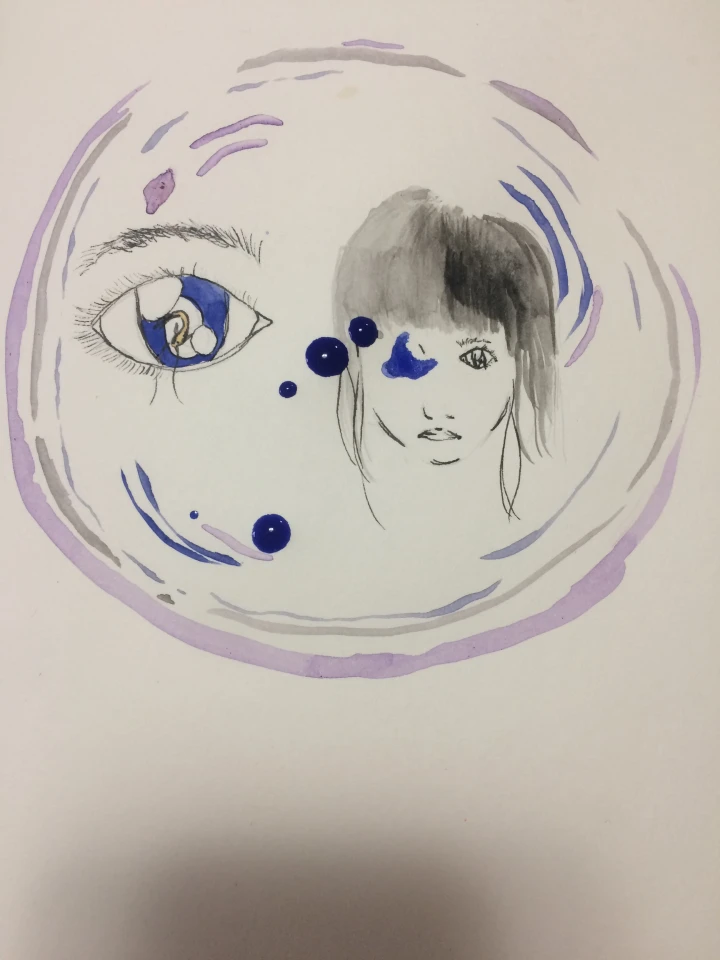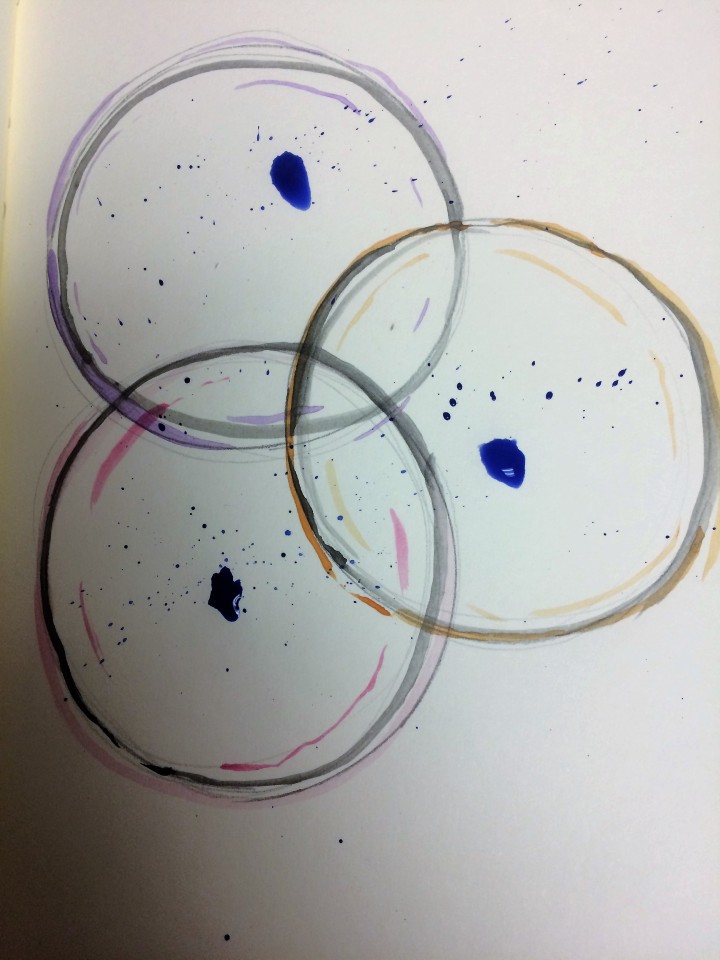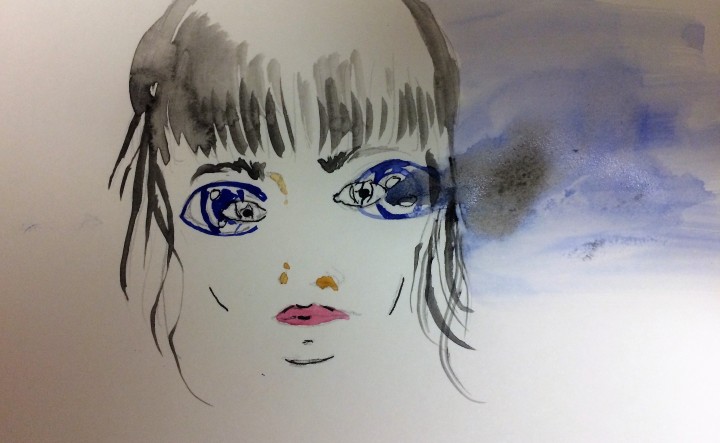The second aspect to be discussed is mirroring. Mirroring is a therapeutic technique used to validate the client’s experience, and reflect their self: affect, behaviour and memories back to them. This aspect, unlike empathy, is more tangible and therefore more easily understood. However, it still requires practice and exploration. Carpendale provides us with a number of probing questions that open the gates for reflection (Carpendale, 2006).
What does mirroring have to do with presence?
Presence is the being with an other inside a therapeutic context. Being aware of your own feelings, cognitions and affects, and how these might influence the therapy session. Being aware of time and space, the environment in which the therapy is unfolding, and being mindful of an individual client’s needs. Presence is essential in forming the therapeutic alliance – if the client does not feel that they are heard, seen, or understood, the therapeutic alliance, which is built primarily out of trust, will not flourish.
Mirroring is a core component of presence. When we mirror a client’s affect they recognize that we are not only present in the moment, focusing solely on them, but we also demonstrate a reaching towards understanding. This translates into validation. There are no judgements with mirroring. Mirroring is a verbatim reflection of the client’s experience in the moment, or of a remembered experience. When we mirror we are not adding our own thoughts or interpretations, we are merely reiterating the client’s feelings and experience.
I believe when we mirror it is appropriate to seek clarification. In this way too, the client is offered another way to approach the situation. If we seek clarification, this validates the client’s experience as being entirely their own, with a nod to the empathic response that should be experienced throughout therapy. When we discuss these aspects of therapeutic presence it is difficult to pull them apart and investigate them individually because they are not intended to be isolated – they work together. The whole of our therapeutic presence is comprised of these six aspects.
How do we communicate with mirroring?
We communicate effectively with our reflections of the clients experience. These reflections are not mere repetitions – but they are also not infused with our own thoughts or interpretations. Upon reflection it appears a simple technique, but it is one that requires focus and practice. It is essential to find the balance between merely repeating and adding our own self to the reflection.
The mirroring technique acts in such a way that the client sees themselves reflected in a new light, so that they can infuse meaning, and draw out new interpretations. With our reflections we are holding up a mirror for which they can look into and better understand their self, and their situation.
When words fail and I am grasping clumsily for some understanding, I put the pen down and pick up the paint brush. When expression is contrived or strained through words, art can be my saviour to express what I am hinting at.
I painted “Mirror, Mirror” in response to Carpendale’s question “how do we communicate with mirroring?” 
The characteristic mandala is the focus of this image, used in this context as a mirror. Blue, purple and black highlight the mandala, emphasizing its contours with the repetitive strokes. Inside the mirror sits my reflection, with a larger eye seated to the left of my image. In place of the pupil of this larger eye is a koi fish, which extends beyond the eye. Water droplets fill the spaces between this eye and my image, and act as a replacement for my missing eye.
In dialoguing with this image I am drawn to the potent imagery that I rely on, and that I find repeating itself over and over in my art-work. The eye is seen as the window to the soul, and in this way, our mirroring can be understood as something comprised of more than just our words. Mirroring is something that, like empathy, requires all parts of our self – our mind, body, and soul (psyche, spirit). The client can see and feel our mirroring responsiveness through our eyes, body language, and vocal tone. We must be attuned to this throughout the therapy session. The water, a symbol of strong significance which presents itself repeatedly, is representative of the collective unconscious, and the unconscious mind in general. Our mirroring then is opening a window into the client’s unconscious mind, in a similar way to our empathic response.
The koi is a personal symbol, which represents perseverance, ambition and courage. The koi is placed here to represent a direct mirroring of my self within a therapy session. In this instance then, I am the subject of therapy. However, when we think of the meaning behind the koi, we can still apply this to our aspect of mirroring. There is a story called The Yellow River at Hunan, which details the journey of koi fish through the waterfall, Dragon’s Gate. The koi fish who successfully complete the journey through Dragon’s Gate, transform from a koi fish into a dragon. This represents the koi’s ability for change and growth, and when we investigate the symbolic meaning behind the dragon we come to find that the dragon represents growth, luck and development. Therapy is an aim towards change, and furthering self-development. Our mirroring is a significant aspect of our therapeutic presence that provides the client with an opportunity for growth and change, through playing the role of their reflection. When they see their self in such an empathic, understanding way, they are provided with a new way to reflect upon their goals, current development, and life situation.
How were you seen as a child?
This is an important question for us to reflect on. Seen here does not refer to physical appearance, rather, it refers to your true self. We need to reflect on this to recognize our own potential countertransferences in future therapeutic relationships. If we never felt truly seen, understood, validated and so forth, how can we know how to embody it and provide it for a client?
I have led an incredibly privileged childhood, and both of my parents entered my world in an attempt to understand me. The best and most ready example I have of this is my interest in art. I am where I am today because my parents recognized my interest and ability in art, and nurtured this passion. The important thing to remember here is that how one was seen as a child might appear different for different people – it is the experience of being seen that matters. If I had interpreted my parents support and nurturing as a negative thing, I might not be able to reminisce on my childhood so positively, and I might conclude that I was in fact, not seen. However, this is not the case.
I was seen in all other areas of my childhood as well. Not only was I regarded as an artist, creative, energetic soul, whose passions were directed toward both visual and dramatic arts, I was seen as a whole, complete person. I felt understood as a person with a self, and I was supported in all ventures. How my parents interacted with me as a young child shaped who I am today, and informed my self-concept. This support is imperative to a developing self, something one will undoubtedly encounter in therapy, for we are always developing, always reaching for self-actualization.
At the end of this reflection, I was left with one probing question that had been ruminating in my mind.
What benefit does mirroring have on the therapeutic alliance, and process?
The therapeutic alliance is essential for successful therapy, without which there is no trust, and no relationship. Therapy happens in relation to an other. Mirroring demonstrates to the client that you can be trusted, in that, you will stave off judgements and interpretations in order to enter their world and attempt to fully understand them.
Mirroring encourages the therapeutic process, providing the client with freedom to explore their self in a safe, non-judgemental environment. Unconditional positive regard is an integral part of this aspect of mirroring. In order to mirror appropriately, we leave out personal reflections, interpretations and judgements. We recognize the client, and accept and appreciate them for who they are, in the moment. The change that occurs in therapy will happen at the client’s pace.
Conclusion
Mirroring is another aspect of the therapeutic presence that eludes us to a degree. It is nuanced and requires meditative practice. This is part of being present in therapy – always being attuned and aware of your self, body, and cognitions, and challenging them in the moment in an attempt to provide the client with the most beneficial environment wherein change can occur. One must practice each aspect of the therapeutic presence, which as mentioned before, will be a life-long process.
References
Carpendale, M. (2006). Kutenai Art Therapy Institute Manual. (pp. 45-60).

